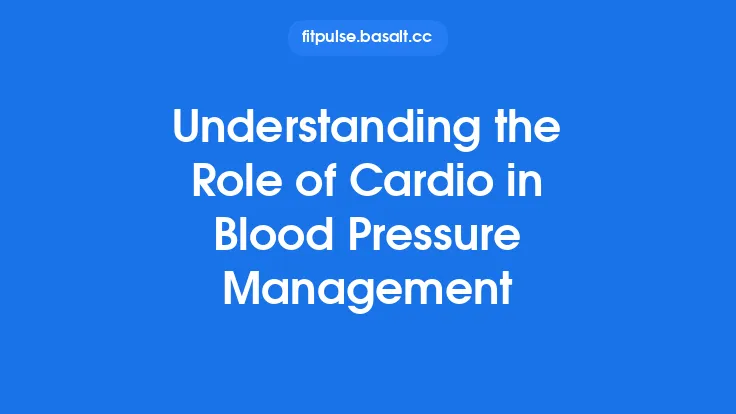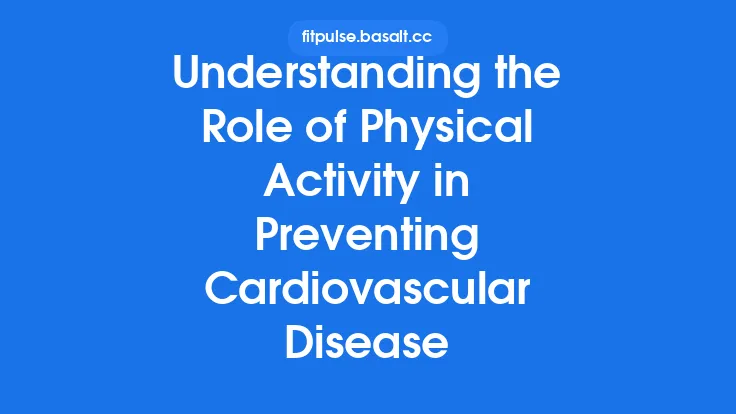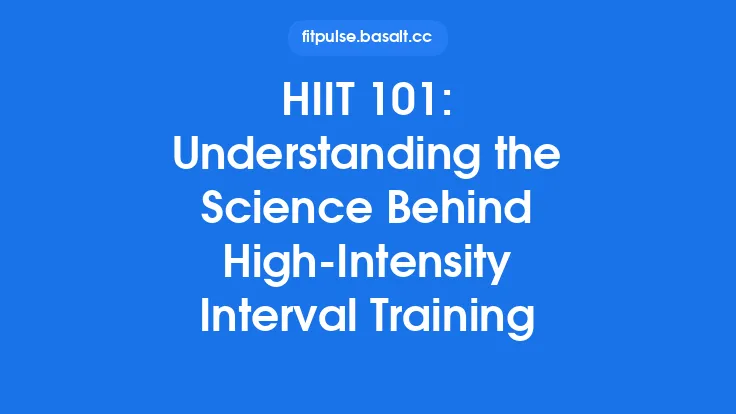Cryotherapy, the deliberate exposure of the body to extreme cold, has become a staple in the toolbox of athletes, clinicians, and wellness enthusiasts alike. While the buzz often centers on performance gains or recovery speed, the underlying physiological processes that drive these outcomes are both intricate and fascinating. This article delves into the science of how cold—delivered through various modalities such as localized ice packs, cold‑water immersion, and whole‑body cryotherapy chambers—interacts with the body at the vascular, neural, cellular, hormonal, and systemic levels. By unpacking these mechanisms, we can better appreciate why cryotherapy elicits its characteristic effects and where its true therapeutic potential lies.
1. Vascular Responses: From Vasoconstriction to Reactive Hyperemia
Acute Vasoconstriction
When skin and superficial tissues encounter temperatures below ~15 °C, sympathetic nerve activity spikes, prompting the release of norepinephrine at the level of cutaneous arterioles. This induces rapid vasoconstriction, reducing blood flow to the exposed region by up to 80 % within seconds. The primary purpose of this response is thermoregulatory—conserving core temperature by limiting heat loss.
Endothelial Modulation
Cold exposure also influences endothelial function. The shear stress reduction caused by vasoconstriction diminishes nitric oxide (NO) production transiently, while endothelin‑1 (ET‑1) levels rise, reinforcing the constrictive tone. However, the subsequent re‑warming phase triggers a surge in NO release, facilitating vasodilation.
Reactive Hyperemia
Upon removal of the cold stimulus, the abrupt cessation of sympathetic drive and the accumulated metabolic by‑products (e.g., lactate, CO₂) provoke a rebound increase in blood flow—reactive hyperemia. This surge can increase local perfusion by 150–200 % above baseline for several minutes, delivering oxygen, nutrients, and immune cells to the previously ischemic tissue. The magnitude of hyperemia is proportional to the duration and intensity of the preceding cold exposure.
Implications for Tissue Healing
The oscillation between reduced perfusion (limiting edema formation) and enhanced post‑cold perfusion (promoting nutrient delivery) creates a unique environment that can modulate the inflammatory cascade, as discussed later.
2. Neurological and Pain Modulation
Cold‑Induced Analgesia (CIA)
Cryotherapy activates cold‑sensitive transient receptor potential (TRP) channels, particularly TRPM8 and TRPA1, located on peripheral nociceptors. Their activation leads to a reduction in the firing rate of pain‑transmitting A‑δ and C fibers, a phenomenon known as cold‑induced analgesia. This effect is dose‑dependent: temperatures below 10 °C produce the strongest analgesic response, while milder cooling yields modest pain relief.
Gate Control Theory
The influx of cold‑stimulated A‑β fibers can also engage the spinal “gate” mechanism, inhibiting transmission of nociceptive signals to higher centers. This contributes to the immediate sensation of numbness and decreased pain perception during and shortly after cryotherapy.
Endogenous Opioid Release
Prolonged or repeated cold exposure (e.g., whole‑body cryotherapy sessions lasting 2–3 minutes) has been shown to increase circulating β‑endorphin levels. These endogenous opioids bind to μ‑opioid receptors in the central nervous system, providing a systemic analgesic effect that can persist for up to an hour post‑treatment.
Neuromuscular Implications
Cold reduces the conduction velocity of motor nerves by ~1.5 m/s per 10 °C drop in temperature, leading to a temporary decline in muscle spindle sensitivity and reflex excitability. This can be advantageous for acute injury management (reducing spasm) but may impair performance if applied immediately before high‑intensity activity.
3. Cellular and Molecular Effects
Metabolic Suppression
At the cellular level, temperature reduction slows enzymatic reactions, decreasing ATP consumption by up to 30 % per 10 °C drop. This metabolic down‑regulation conserves energy in injured tissues, limiting secondary damage caused by ischemia‑reperfusion injury.
Mitochondrial Dynamics
Cold exposure influences mitochondrial biogenesis pathways. Acute cooling can transiently increase the expression of peroxisome proliferator‑activated receptor gamma coactivator‑1α (PGC‑1α), a master regulator of mitochondrial turnover. Over repeated sessions, this may promote a more oxidative muscle phenotype, enhancing endurance capacity.
Inflammatory Cytokine Profile
The early phase of cryotherapy attenuates the release of pro‑inflammatory cytokines such as interleukin‑1β (IL‑1β) and tumor necrosis factor‑α (TNF‑α) from macrophages and damaged myocytes. Simultaneously, anti‑inflammatory mediators like interleukin‑10 (IL‑10) are up‑regulated during the re‑warming phase. This shift helps to resolve inflammation without completely suppressing the necessary healing signals.
Matrix Metalloproteinase (MMP) Regulation
Cold exposure can down‑regulate MMP‑2 and MMP‑9 activity, enzymes responsible for extracellular matrix degradation. By tempering excessive matrix breakdown, cryotherapy may protect structural integrity of tendons and ligaments during the acute injury phase.
Oxidative Stress Modulation
Reactive oxygen species (ROS) production is curtailed during the vasoconstricted phase, reducing oxidative damage. However, the subsequent reperfusion period can generate a controlled ROS burst that serves as a signaling cue for adaptive antioxidant responses (e.g., up‑regulation of superoxide dismutase).
4. Hormonal and Metabolic Impacts
Catecholamine Surge
Cold shock triggers a rapid increase in circulating norepinephrine and epinephrine, peaking within minutes. This catecholamine surge stimulates glycogenolysis and lipolysis, mobilizing glucose and free fatty acids for immediate energy needs. In the context of whole‑body cryotherapy, the systemic catecholamine response can contribute to modest increases in basal metabolic rate (BMR) for up to 30 minutes post‑session.
Glucocorticoid Response
Acute cold exposure modestly elevates cortisol levels, a stress hormone that exerts anti‑inflammatory effects. While short‑term elevations are beneficial for controlling inflammation, chronic over‑exposure may lead to dysregulated hypothalamic‑pituitary‑adrenal (HPA) axis activity, underscoring the need for balanced dosing.
Insulin Sensitivity
Emerging data suggest that repeated whole‑body cryotherapy can improve peripheral insulin sensitivity, likely mediated by enhanced GLUT4 translocation in skeletal muscle. This effect appears most pronounced when cryotherapy is combined with regular exercise, hinting at synergistic metabolic benefits.
Thermogenic Adaptations
Cold exposure activates brown adipose tissue (BAT) via sympathetic stimulation. BAT thermogenesis increases energy expenditure and can improve lipid profiles over time. While whole‑body cryotherapy sessions are brief, cumulative exposure may contribute to modest BAT activation in cold‑responsive individuals.
5. Systemic Effects of Whole‑Body Cryotherapy (WBC)
Cardiovascular Load
During a typical WBC session (−110 °C to −140 °C for 2–3 minutes), systemic vasoconstriction occurs, raising peripheral resistance. The heart compensates by modestly increasing stroke volume and heart rate, resulting in a transient rise in cardiac output. For healthy individuals, this load is well tolerated, but patients with uncontrolled hypertension or severe cardiac disease should avoid WBC.
Neuroendocrine Reset
Whole‑body exposure elicits a pronounced “cold shock” response, characterized by a surge in endorphins, dopamine, and serotonin. These neurochemicals can improve mood and reduce perceived fatigue, offering a psychophysiological benefit that extends beyond pure tissue healing.
Immune Cell Trafficking
Cold‑induced vasoconstriction followed by reperfusion mobilizes leukocytes, particularly neutrophils and monocytes, from peripheral reservoirs into circulation. This “immune flushing” may enhance surveillance and clearance of debris in injured tissues, though the exact clinical relevance remains under investigation.
Thermoregulatory Acclimation
Repeated WBC sessions can blunt the acute sympathetic response to cold, a phenomenon known as cold habituation. This adaptation may improve tolerance to subsequent cold exposures, potentially benefiting athletes who train in low‑temperature environments.
6. Clinical Applications and Evidence
Acute Musculoskeletal Injuries
The combination of reduced metabolic demand, limited edema formation, and analgesia makes cryotherapy a logical early‑phase intervention for sprains, strains, and contusions. Randomized trials have demonstrated modest reductions in swelling volume (≈10–15 %) when cryotherapy is applied within the first 24 hours post‑injury.
Post‑Operative Pain Management
In orthopedic surgery, localized cryotherapy (e.g., cold caps or limb wraps) has been shown to lower opioid consumption by 20–30 % during the first postoperative week, likely via the mechanisms of CIA and endogenous opioid release.
Chronic Inflammatory Conditions
Patients with rheumatoid arthritis or chronic tendinopathies sometimes experience symptom relief after regular cryotherapy sessions. The anti‑inflammatory cytokine shift and MMP inhibition described earlier provide a plausible mechanistic basis, though larger, long‑term studies are needed.
Neuropathic Pain
Cold exposure can transiently dampen ectopic nerve firing in conditions such as peripheral neuropathy. Small case series report short‑term pain reduction, but the durability of benefit remains uncertain.
7. Safety, Contraindications, and Practical Guidelines
Absolute Contraindications
- Uncontrolled hypertension or severe cardiovascular disease
- Cryoglobulinemia or cold‑induced urticaria
- Raynaud’s phenomenon (severe)
- Open wounds or compromised skin integrity in the area of application
Relative Contraindications
- Pregnancy (especially first trimester)
- Recent myocardial infarction (within 3 months)
- Neurological disorders affecting temperature perception
Dosage Considerations
- Localized Cryotherapy: 10–20 minutes of ice pack application at 0–5 °C, with a maximum of 2 hours per day to avoid frostbite.
- Cold‑Water Immersion: 10–15 minutes at 10–15 °C for lower limbs; 5–10 minutes at 12–15 °C for whole‑body immersion.
- Whole‑Body Cryotherapy: 2–3 minutes per session, 2–3 times per week for acute recovery; up to 10 sessions per month for chronic conditions, always under professional supervision.
Monitoring
- Skin temperature should not fall below 5 °C for more than a few minutes to prevent tissue damage.
- Heart rate and blood pressure should be checked before and after WBC, especially in at‑risk populations.
Post‑Treatment Re‑warming
Gradual re‑warming (e.g., light clothing, warm fluids) is essential to avoid a rapid drop in core temperature and to maximize the reactive hyperemia response.
8. Emerging Research and Future Directions
Molecular Imaging of Cold‑Induced Perfusion
Advanced techniques such as contrast‑enhanced ultrasound and near‑infrared spectroscopy are being employed to visualize the spatiotemporal patterns of blood flow during and after cryotherapy, offering deeper insight into optimal dosing windows.
Cryotherapy and Epigenetics
Preliminary animal studies suggest that repeated cold exposure may modulate DNA methylation patterns in genes related to inflammation and mitochondrial function. Translating these findings to human athletes could open avenues for personalized cold‑therapy protocols.
Integration with Wearable Technology
Smart garments equipped with temperature sensors and haptic feedback are under development to deliver precise, individualized cooling doses, potentially reducing the risk of over‑exposure while enhancing therapeutic efficacy.
Combination with Pharmacologic Agents
Research is exploring synergistic effects of cryotherapy with anti‑inflammatory nutraceuticals (e.g., curcumin) or low‑dose NSAIDs, aiming to amplify the anti‑catabolic environment without increasing systemic drug load.
9. Summary
Cryotherapy exerts a cascade of physiological effects that begin at the skin surface and reverberate through vascular, neural, cellular, hormonal, and systemic domains. The immediate vasoconstriction limits edema, while the subsequent reactive hyperemia delivers a surge of nutrients and immune cells. Neural pathways dampen pain through cold‑sensitive receptors, gate control mechanisms, and endogenous opioid release. At the cellular level, metabolism slows, inflammatory cytokine profiles shift, and mitochondrial signaling adapts. Whole‑body modalities add a neuroendocrine dimension, influencing catecholamines, cortisol, and brown adipose tissue activity.
Understanding these mechanisms equips practitioners to harness cryotherapy more intelligently—matching the modality, temperature, and exposure duration to the specific therapeutic goal while respecting safety boundaries. As technology advances and research uncovers deeper molecular insights, the precision and efficacy of cold‑based interventions are poised to grow, solidifying cryotherapy’s role as a scientifically grounded pillar of recovery and injury management.





